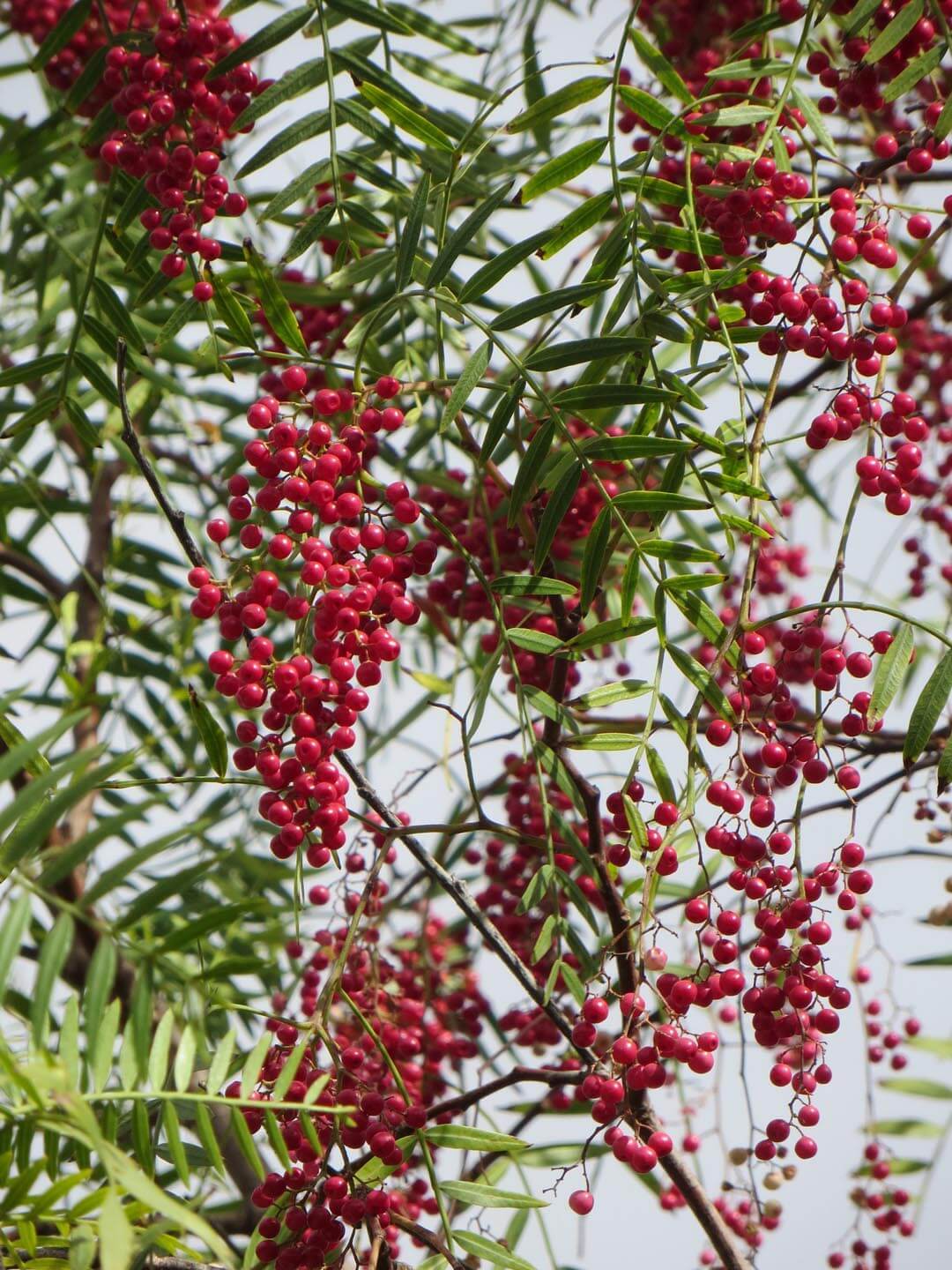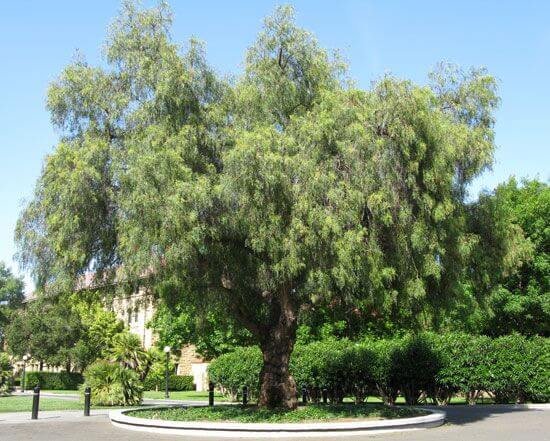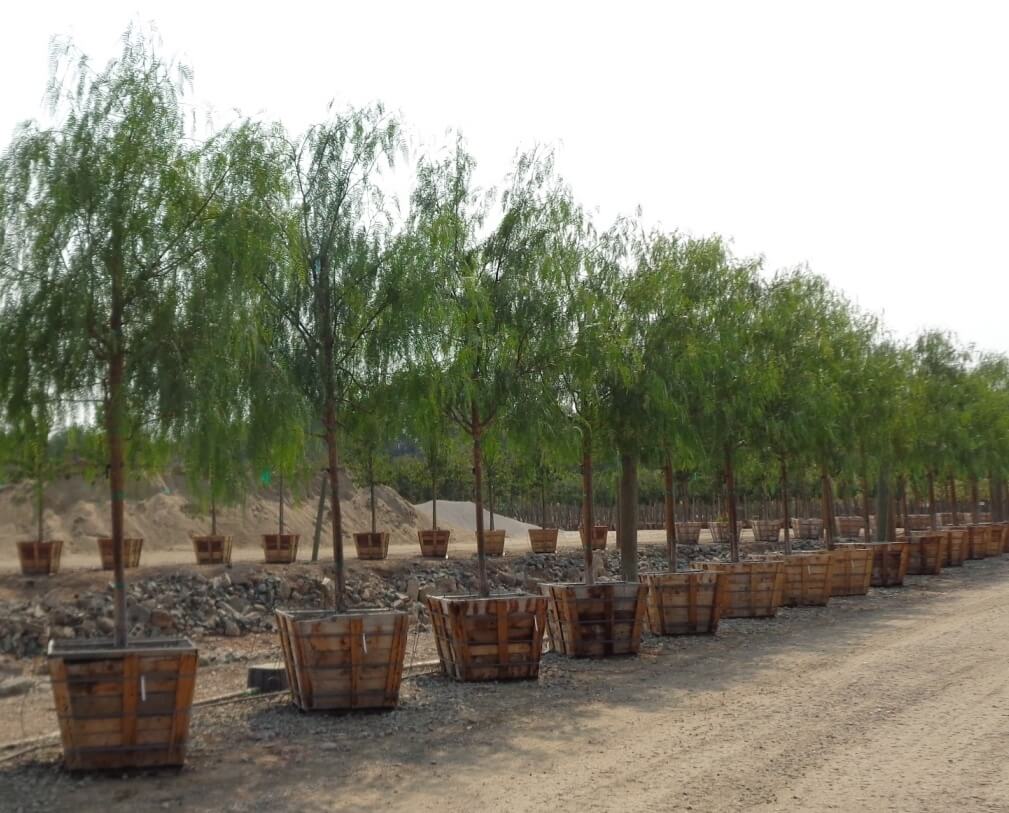Wholesale Division: (818) 316-2000 [email protected]
Retail Division – So Cal Only: (818) 316-2024 [email protected]




Boething Treeland Farms grows over 1,000 varieties of trees, shrubs, perennials and specialty plants on 10 California nurseries to serve the wholesale landscape and nursery industries throughout the Western United States and beyond.
Plant Type: Trees
Evergreen-Deciduous: Evergreen
Overall Mature Size: Medium
Also Grown As: Multi Trunk / Standard Tree
Mature Height & Spread: 25-40' x 25-40'
Natural Growth Habit: Rounded
Native To: South America
Exposure: Full Sun
Water: Medium Water, Low Water
Flower Color: Yellow
Bloom Time: Spring
Special Features: Attractive Bark / Desert Conditions / Drought Resistant / Seacoast Conditions
Container Sizes: #15, 24" Box, 36" Box, 48" Box
Sunset Garden Zones: 8, 9, 12-24
Minimum USDA Hardiness Zone: 9
An iconic feature in our Southern California landscape, Schinus molle is actually a Peruvian native which arrived with the San Diego missionaries in the 1830’s. It has adapted so well to our coastal, inland and valley areas that it is commonly seen throughout this and other arid states in the Southwest. Evergreen and naturally drought tolerant, it will survive where only occasional rainfall exists. In the low deserts, however, irrigation is essential. It is an excellent choice for large parks or play areas, in courtyards or along long broad driveways. It can become very large, exceeding 40 feet in height and width. The trunk will become gnarled and fabulously interesting with age. The foliage is bright green and comprised of many narrow leaflets. The flowers are insignificant but the papery pink to red berries are wonderfully ornamental in the fall and winter. Given adequate space in Western Garden zones 8,9, and 12-24, it will attract birds, butterflies, and shade-seekers wherever it is planted.
An iconic feature in our Southern California landscape, Schinus molle is actually a Peruvian native which arrived with the San Diego missionaries in the 1830’s. It has adapted so well to our coastal, inland and valley areas that it is commonly seen throughout this and other arid states in the Southwest. Evergreen and naturally drought tolerant, it will survive where only occasional rainfall exists. In the low deserts, however, irrigation is essential. It is an excellent choice for large parks or play areas, in courtyards or along long broad driveways. It can become very large, exceeding 40 feet in height and width. The trunk will become gnarled and fabulously interesting with age. The foliage is bright green and comprised of many narrow leaflets. The flowers are insignificant but the papery pink to red berries are wonderfully ornamental in the fall and winter. Given adequate space in Western Garden zones 8,9, and 12-24, it will attract birds, butterflies, and shade-seekers wherever it is planted.